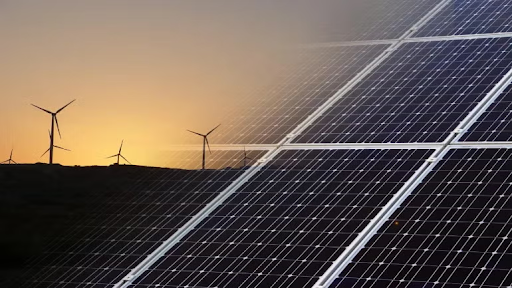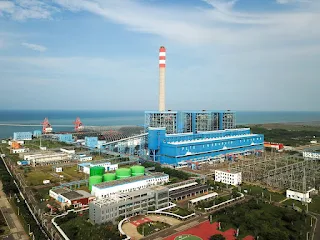Environmental degradation in mountains and river systems poses significant threats to ecosystems, water security, and local livelihoods. Around the world, mountain areas experience land degradation and glacial retreat, while river systems suffer from pollution, sediment overload, and ecosystem collapse. This article explores global trends, case studies, data-driven insights, and key implications for education and business.
1.
Global Trends in Mountain Ecosystem Degradation
Mountain ecosystems are vital “water
towers” that feed billions downstream—but are under severe pressure:
- Between 2015–2019, 1.6% of global mountain land
was degraded, particularly in alpine zones (2.29%), Central/Southern Asia
(2.22%), and Eastern/Southeastern Asia (2.17%) UNESCOUNSD.
- As of 2020, 57% of mountain areas were under
intense degradation pressure due to deforestation, infrastructure
development, and land-use change UNESCO.
- Near-surface permafrost is projected to shrink by 66–99%
by 2100, threatening stability and glacier-fed hydrology UNESCO.
In Central Asia, for example, the Tien
Shan, Pamir, Altai, and Karakorum ranges have lost ~30% of glacial mass
over 40 years; river flow of major rivers like Amu Darya and Syr Darya is
expected to decrease by 10–15% in the coming decade UNESCO+5CABAR.asia+5Earth.Org+5.
These changes jeopardize agricultural and hydropower-dependent communities.
2.
Riverine Damage: Pollution, Sediments, and Biodiversity Loss
River
Pollution & Plastic
- The Ganges in India receives ~1 billion gallons
of raw sewage and industrial effluent every day, severely affecting water
quality and health The Guardian+6Science+6New York
Post+6Conserve Energy Future+1Gitnux+1.
- Global riverine plastic emissions exceed 1 million
metric tons/year, with Indonesia, the Philippines, India, China,
and Malaysia among the worst offenders Science+1ScienceDirect+1.
Rivers in Indonesia alone account for 56,000 MT annually reaching oceans.
Heavy
Metals in Sediment
A meta‑analysis from Asia and Europe
shows sediment contamination with Cr, Ni, Cd, Cu, Pb, Zn, Mn across Taiwan,
China, India, Bangladesh, Turkey, Nigeria, and Pakistan—raising ecological
risks arXiv+6ScienceDirect+6Science+6.
Major
River Disasters
- The Oder River (Poland-Germany) in summer 2022
experienced massive fish kills—over 100 tonnes removed—due to toxic algal
blooms likely triggered by industrial saline wastewater discharge Wikipedia.
- Zambia’s Kafue River Basin is heavily polluted:
some 93,000 tons of industrial waste discharge annually from mines and
factories, compromising water quality and human use Worst Polluted+1Reuters+1.
3.
Case Studies: Regional Impacts and Mountain–River Interactions
Ok
Tedi Disaster (Papua New Guinea)
A catastrophic example of riverine
damage: from 1984 to 2013, up to 2 billion tonnes of untreated waste from
mining flowed into the Ok Tedi and Fly Rivers. At least 1,588 sq km
of forest affected; downstream sediment sludge devastated ecosystems and local
economies along some 1000 km of the river system. Clean-up will take an
estimated 300 years Wikipedia.
Appalachian
Mountaintop Removal (USA)
Coal mining in Appalachia removed
over 500 mountain tops and deforested >1 million acres,
destroying 12,000 miles of streams. Resulting stream salinity and metal
contamination have caused toxic effects in aquatic fauna and birds Wikipedia.
Colombia
(Andes Emerald Region)
In Muzo, Colombia, emerald mining
(both formal and informal) has caused 29% deforestation and 22%
explosive-related land disturbance, contaminating rivers such as Río Minero
and Ítoco with sediment and chemical residues The Guardian.
Himalayan
Glacial Retreat and Risk
- The Chorabari Glacier near Kedarnath (India) is
retreating ~7 m per year; area shrank from 6.1 km² in 2009 to 5.91 km² in
2019. This triggers flood risk and downstream water scarcity timesofindia.indiatimes.com.
- The Himalayan snowpack feeding major rivers
(Ganges, Mekong, Indus, Yangtze, Salween) is at a 23‑year low—some basins
have snow reserves 50% below average, threatening fresh water for
~2 billion people New York Post.
4.
Impacts on Ecosystem Services and Human Welfare
Water
Security & Agriculture
- Mountain-fed rivers supply up to two-thirds of
global irrigated agriculture.
- Reduced runoff and sediment flux (expected to more than
double by 2050 in High Mountain Asia) jeopardize hydropower capacity and
food security Science.
Biodiversity
Loss
- Mountain biodiversity hotspots (25 of 34 global
hotspots) suffer habitat degradation.
- Lakes in Siberia and Kazakhstan, even in protected
areas, exhibit 4–26 microplastic particles per liter—indicating
pervasive pollution even in remote regions UNESCOmdpi.com.
Economic
Costs
- Wetlands—including mountain-fed river floodplains—are
disappearing at ~22% loss since 1970, risking up to $39 trillion in
global losses by 2050 Reuters.
- Upper Atoyac River basin (Mexico) faces annual
pollution costs of up to $16 million across agriculture, health,
and tourism sectors arXiv.
5.
Drivers Behind the Damage
- Climate change:
warming reduces glaciers and permafrost stability; extremes increase
sediment flux and flood risk in mountain regions ScienceCABAR.asiaUNESCO.
- Industrial and mining operations: tailings, waste, deforestation, and river discharge
threaten water quality and habitat.
- Agricultural expansion and overgrazing: especially in Central Asia and Tajikistan, causing
erosion and landslides on mountain slopes Wikipedia.
- Urban and infrastructure development: tourism, hydropower dams, and construction in fragile
mountain towns like Joshimath (India) cause subsidence and destabilization
AP News.
- Waste mismanagement:
plastics, toxic effluent, and sewage contaminate river systems even in
remote areas.
6.
Business and Educational Implications
For
Businesses:
- Due diligence:
companies must assess mountain‑river ecosystem risks to avoid brand damage
and legal liability.
- Sustainable practices: resource extraction should avoid river discharge,
apply sediment control, and respect watershed health.
- ESG monitoring:
robust data collection (e.g. remote sensing, sediment analysis) supports
transparency and credibility.
For
Education:
- Curricula:
share global case studies to illustrate ecosystem interdependencies.
- Interdisciplinary learning: combine hydrology, climate science, engineering, and
environmental law.
- Student-driven research: encourage monitoring of local mountain-river systems
and awareness of pollution data.
7.
Pathways to Restoration and Resilience
Nature-Based
Solutions
- Riparian buffer restoration, agroforestry on slopes (e.g., Pamir Mountains
reforestation in Afghanistan).
- Wetland conservation
to manage floods and improve water quality, protecting communities
downstream UNESCO.
Technological
& Policy Responses
- Satellite and drone monitoring for glaciers, erosion, and sediment flow.
- River clean-up and pollution control (e.g., Citarum clean-ups in Indonesia).
- Policy enforcement:
bans on uncontrolled tailings discharge, plastic-reducing legislation,
mining regulations.
Community
Engagement & Justice
- FPIC (Free, Prior, Informed Consent) in mountain and river communities (e.g., Colombian
emerald regions, PNG’s remote areas).
- Local restoration efforts: empower community-based forest and watershed
rehabilitation.
8.
Conclusion
Mountain and river ecosystems—though
geographically distinct—are deeply interconnected. Degradation in highland
zones translates into water pollution, sediment disruption, and increased
disaster risk downstream. From the melting glaciers of the Himalayas to river
tailings in Papua New Guinea, and toxic effluent in Zambia and Indonesia, the
evidence is clear: interventions are urgently needed.
For both educational and business
audiences, the imperative is to build sustainability-based strategies: invest
in data-driven environmental monitoring, support restoration projects, enforce
environmental safeguards, and engage local communities. Only then can we
protect the planet’s vital mountain and river systems—for today's populations
and future generations.



























